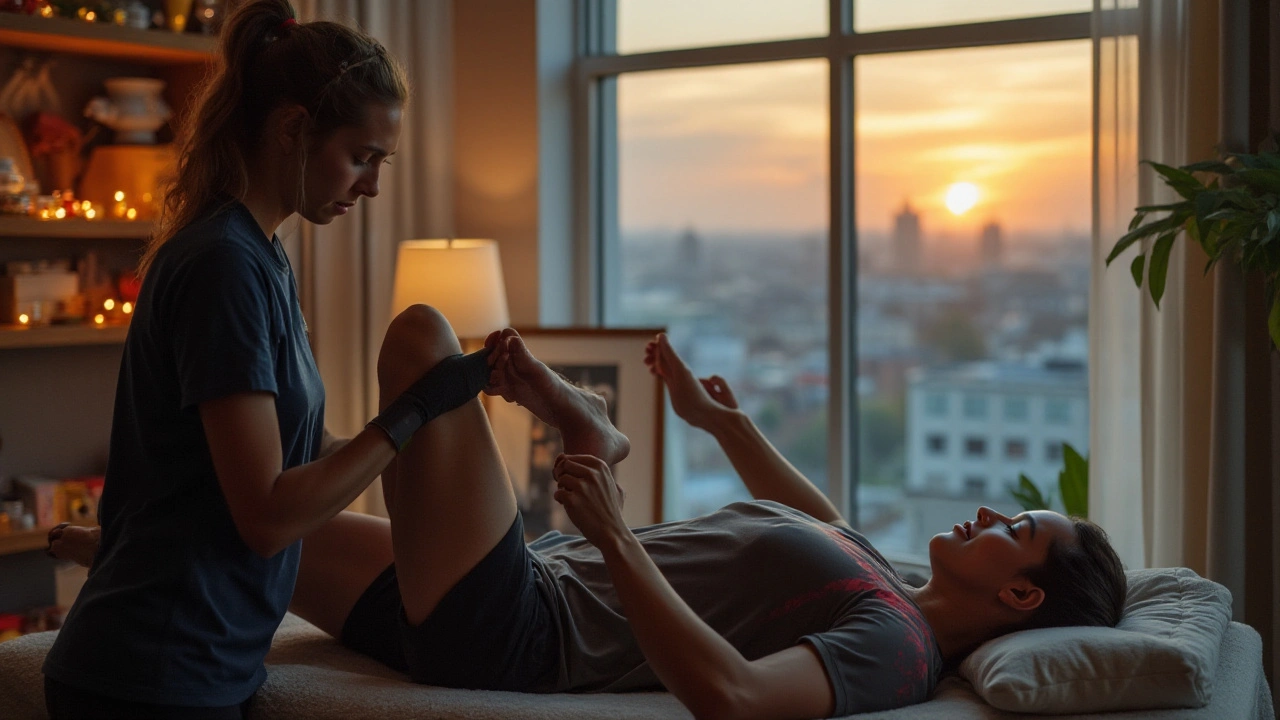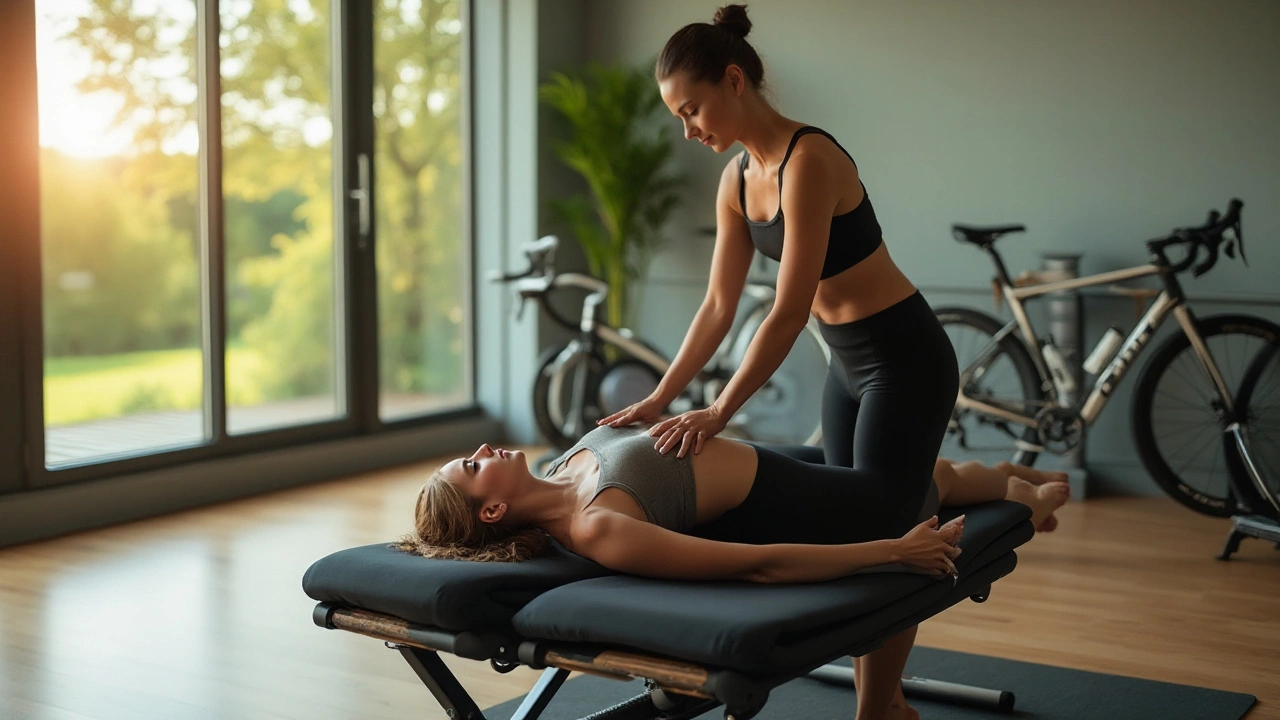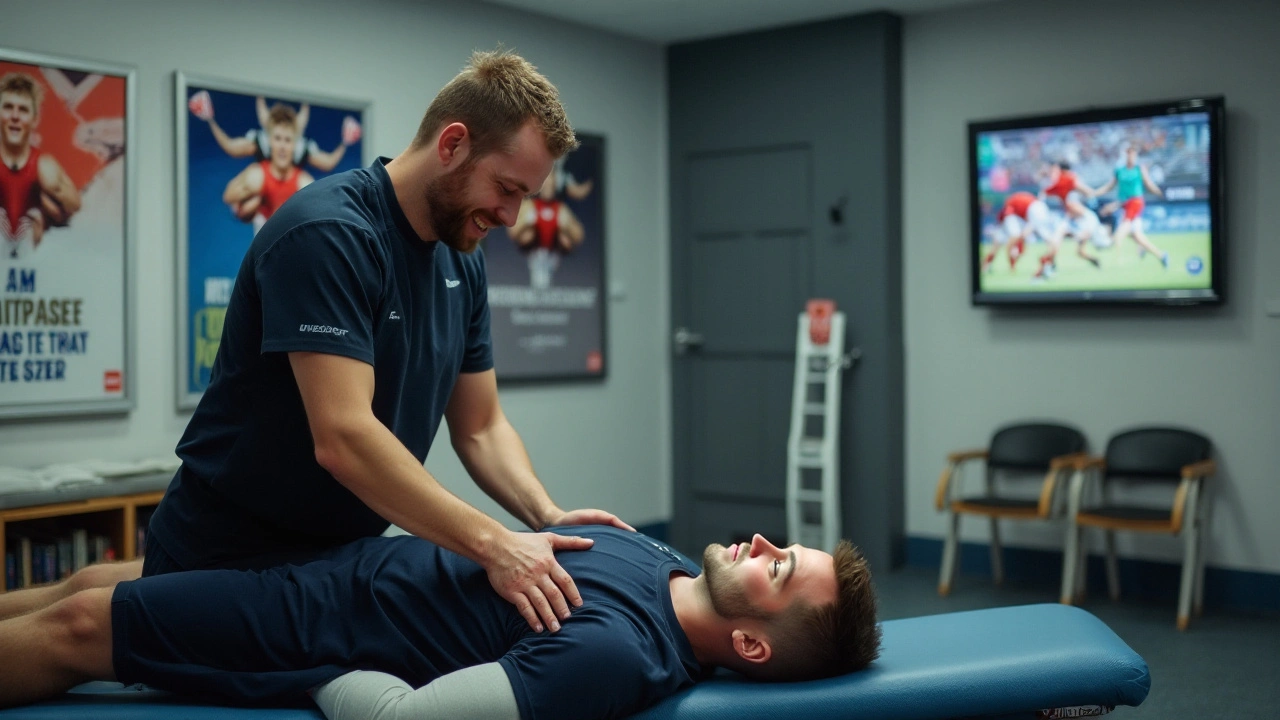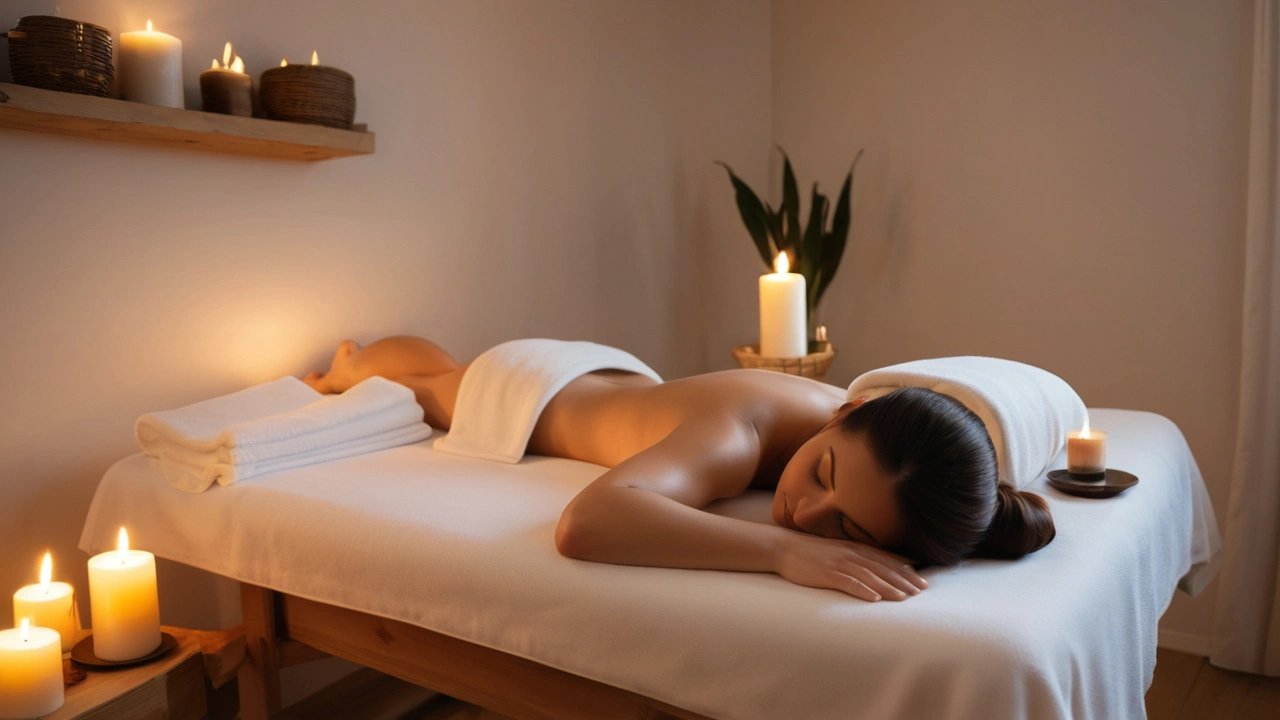Unlocking the Secret Perks of Sports Massage Therapy

In the realm of athletic performance, physical perseverance is often seen as the cornerstone of success. But what if there were hidden tools to optimize that success? Sports massage therapy, although often overshadowed by traditional training methods, offers benefits that could significantly enhance both your physical and mental stamina.
Whether you're a professional athlete or simply someone who enjoys the occasional run, understanding the profound effects of sports massage can be a game-changer. It's not just about working out those knots and kinks; it's about conditioning your body to reach its fullest potential.
Let’s explore how this specialized massage can optimize your performance, boost recovery, and bring about a harmonious balance between body and mind. Dive into the little-known advantages of incorporating sports massage into your fitness regimen for a healthier, more resilient you.
- Introduction to Sports Massage
- Performance Enhancement
- Injury Prevention and Recovery
- Mental Health Benefits
- Integrating Massage into Your Routine
Introduction to Sports Massage
Sports massage is more than just a luxury for elite athletes; it’s a crucial component of maintaining optimal physical condition and preventing injuries. Developed specifically to assist in athletic performance and recovery, this type of therapy carves a niche by addressing the unique needs of those who push their bodies to the limits. The techniques used in sports massage are tailored to treat specific ailments and imbalances within muscle groups that athletes often experience. Understanding this form of massage and its effectiveness is key to grasping its popularity among professionals and amateurs alike.
The roots of sports massage date back to ancient times, where warriors and athletes sought relief from their physical exertions through various forms of bodywork. Fast forward to today, the practice is more scientific with therapists employing highly specialized techniques. Modern sports massage therapy incorporates elements such as deep tissue massage, trigger point therapy, and even myofascial release. These methods are combined in a bespoke treatment designed for the physical demands of athletes, aimed to prevent injuries and accelerate recovery.
There are numerous studies advocating the benefits of sports massage in reducing muscle soreness and improving flexibility. In fact, research published in the Journal of Athletic Training highlighted a notable decrease in Delayed Onset Muscle Soreness (DOMS) in athletes who regularly received sports massages post-competition. As Benjamin Gill, a renowned sports therapist, notes,
"Sports massage is not merely about treating an existing condition, it is about creating optimum bodily function to pave the way for excellence in performance."
Typically, a sports massage session begins with an analysis of the athlete’s body condition and specific requirements. Therapists adjust their techniques depending on whether the goal is to prepare muscles for high activity levels or help them recover after intense exertion. It's tailored so each movement, from the pressure applied to the strokes used, directly benefits the particular muscle groups in need.
Moreover, a significant advantage of embracing sports massage therapy is the mental clarity it can bring. While it indeed focuses on physical enhancement, the rhythmic patterns and physical relaxation the treatment induces can contribute to mental relaxation too. It’s here that science meets comfort, providing a holistic benefit that impacts both body and mind, aligning with the contemporary idea of wellness being multi-faceted.
The benefits of sports massage make it a must-have tool for many athletes, from seasoned professionals to weekend warriors. It fortifies the foundation of physical health, enabling individuals to push their boundaries safely. As the understanding of its benefits spreads, its adoption by a broader audience grows, making sports massage an integral part of maintaining balance in a physically demanding lifestyle.
Performance Enhancement
The art of sports massage holds a remarkable influence on achieving peak athletic performance. Not merely a tool for relieving stress, its impact on enhancing physical performance is profound and multi-dimensional. At the core, sports massage works by boosting circulation. Improved blood flow means more oxygen and nutrients reach the vital muscles, enhancing their function and endurance during high-intensity activities. This optimized circulation helps in quicker removal of metabolic byproducts produced during strenuous exercises, thereby significantly lowering muscle fatigue.
This form of therapy also aids in the recovery of muscle fibers. By promoting flexibility and reducing stiffness, athletes find themselves less prone to injuries, a critical factor for sustaining long-term participation in any sport. This looseness doesn’t just feel great; it contributes to improved range of motion, making movements more efficient and fluid. Collagen and elastin fibers, which significantly impact muscle flexibility, are positively influenced by regular massages.
Small tweaks achieved through this practice can lead to notable enhancements in muscle tone and responsiveness. An Australian Physiotherapy Association review underscored this, stating that massage optimizes neurological pathways crucial to muscle responsiveness. This adaptability is particularly useful in sports demanding quick bursts of speed and agility. There’s also growing evidence on how massage might positively influence proprioception—the body's ability to perceive its position in space—causing fewer mishaps during fast-paced maneuvers.
In a compelling study published in the Journal of Strength and Conditioning Research, athletes who incorporated sports massage into their weekly regime were found to exhibit lower cortisol levels, a stress hormone that often hinders performance. This has a domino effect not only on the physical attributes of athletes but on their mental state as well, helping them maintain focus and strategically channel their energy towards achieving their goals.
"Sports massage isn’t just for invigoration. It systematically helps in recalibrating the body's natural equilibrium, fostering superior athletic performance," once noted Dr. Sarah Johnson, a leading expert in sports medicine.
Emphasizing the virtue of mental clarity is another aspect. An athlete’s mental state can make or break their performance, and surprisingly, this is where massage shows its unexpected prowess. Regular sessions have been linked to reduced anxiety levels, contributing to a calmer, more focused mind. By incorporating this into their regimen, athletes not only improve their physical capabilities but also condition their minds to withstand the pressures of competition inevitably faced on the field.
To sum up, incorporating sports massage is akin to fine-tuning an intricate machine. Its benefits stretch beyond the apparent, rooting deeply into physiological and psychological realms, unveiling a new plateau of performance potential for the dedicator. With systematic and consistent application, the hidden benefits seamlessly blend into everyday routines, forming an invaluable asset for anyone aiming to elevate their athletic journey.

Injury Prevention and Recovery
When it comes to sports therapy, one of the pivotal roles of sports massage is in both preventing injuries and accelerating recovery. Athletes frequently experience strains and sprains, which can derail their training schedules and affect performance. Sports massage techniques are designed to alleviate tension and improve tissue elasticity, which acts as a buffer against potential injuries. By targeting specific muscle groups, therapists can help in aligning muscular imbalances and eliminate areas of chronic tension, making your body more resilient to the rigors of physical activity.
This form of massage increases blood and lymph flow, which is crucial in removing metabolic waste from the muscles post-exercise. An effective elimination process ensures your muscles are less damaging and sore after intense activity, hence, contributing significantly to the recovery process. Often, athletes incorporate regular sports massage sessions into their training schedules not just as a remedy but as a preventative measure. In an insightful statement, the American Massage Therapy Association noted,
"Massage therapy has been shown to reduce muscle soreness and improve blood flow, which can help prevent injury and quicken recovery."
Specialized techniques also focus on stretching and lengthening muscles, which enhance flexibility and reduce the risk of injuries. Flexibility is often regarded as one of the cornerstones of injury prevention because it decreases muscle stiffness and augments joint mobility. For instance, a well-stretched quadriceps muscle is far less likely to tear during a sudden sprint. Moreover, regular massage not only aids the physical aspect but fosters a psychological readiness to train consistently, knowing there are mechanisms in place to reduce injury risks.
When injuries do occur, timely and appropriate intervention is crucial. Sports massage offers a crucial component of rehabilitation. By breaking down scar tissue and promoting healing, recovery is not just accelerated; the quality of recovery is enhanced. This means injuries heal properly, allowing athletes to return to their sports without lingering issues or weaknesses that could result in further injuries. Studies have shown that massage can significantly reduce the healing time of soft tissue injuries by encouraging the efficient functioning of the circulatory and lymphatic systems.
In integrating sports massage into athletic programs, it is essential to maintain open communication with healthcare providers, including physiotherapists and coaches. Personalized massage plans should be designed to meet the unique needs of each athlete. These plans can include pre-event or post-event massages that focus on specific areas that are prone to soreness or tightness. By understanding your body's responses to specific physical demands, strategic massage can be employed as an essential tool in the sports injury prevention toolkit.
Mental Health Benefits
It's easy to perceive sports massage as solely a physical remedy, aimed at treating the sore muscles that come after intense training sessions. But delve a little deeper, and you'll uncover its profound impact on mental well-being. The connection between the body and mind is complex and deeply intertwined, and sports massage plays a significant role in fostering mental calm while enhancing athletic performance.
The rhythmic, intentional movements in sports massage can trigger the release of endorphins, the body’s natural mood elevators. This not only helps in alleviating stress but also addresses issues like anxiety and depression. By boosting serotonin and dopamine levels, massage therapy can improve one's sense of well-being, justifying its reputation as a dual-purpose treatment.
Moreover, the relaxation achieved through this therapy is deeply rejuvenating. Athletes, or even casual exercisers, often talk about the state of serenity they find on the massage table, a calm that seems elusive in their fast-paced lives. The softening of the muscles translates into the softening of mental tensions as well, creating a holistic sense of relief and clarity.
Experts have long acknowledged this therapeutic potential. A study in the International Journal of Neuroscience demonstrated a marked decrease in cortisol levels – the stress hormone that often wreaks havoc on both mental and physical health – following a series of massages. This scientific backing solidifies sports massage as not just a luxury but a legitimate investment in mental health.
"In sports massage, the mind and body are intrinsically linked," states renowned therapist Dr. Simone Perry. "It allows individuals to reset, helping them better manage not just the physical, but also the mental demands of their activities."
The mental clarity and focus gained from regular sports massage can boost an athlete's competitive edge, providing not just physical agility but also strategic advantage. With clear-headedness comes better decision-making, vital for those split-second judgments required in fast-paced sports. Even for non-athletes, the mental enhancement can significantly elevate productivity and creativity in day-to-day activities.
Finally, incorporating sports massage into one's routine can cultivate a nurturing self-awareness, a mindfulness that acknowledges the body’s signals and fosters self-care. This discipline might seem simple but holds transformative power, turning physical recovery into an opportunity for mental growth and tranquility.

Integrating Massage into Your Routine
For many athletes, adding a sports massage into their regular schedule may seem like just another item on a rapidly growing list of to-dos. However, the long-term benefits make it an invaluable addition to your routine. The key is in the strategic integration that aligns with your training schedule, intensity of activities, and recovery needs. When incorporated wisely, sports massage can help foster an environment conducive to reaching peak athletic performance.
First, identify the nature and intensity of your current training regimen. This understanding allows you to schedule massages at optimal times—strategically placed rest days, for instance, can significantly enhance recovery. Indeed, massage sessions prior to high-intensity workouts can serve as a warm-up that increases blood circulation and flexibility. On the other hand, scheduling them post-activity can focus on soothing muscle soreness and reducing lactic acid buildup, which is essential for reducing downtime.
Moreover, consider the frequency of your sessions. A common suggestion by massage therapists is to enjoy a sports massage once a week or bi-weekly during heavy training periods or competitive seasons. For less intense phases, monthly treatments can be sufficient. It is important to listen to your body and adjust accordingly. Every athlete is different, and what works for one may not for another. Therefore, use adjustments to frequency and timing after evaluating how your body reacts to the therapy.
Incorporating massages doesn't just have to be about visiting a massage therapist either. Learning some simple massage techniques to encourage circulation and muscle relaxation can be immensely beneficial.
"Massage isn't just a luxury it's a way to a healthier, happier life," says Dr. Tiffany Field of the Touch Research Institute at the University of Miami School of Medicine. This highlights how regular massage, even through self-application, can have substantial rewards for the body.
Creating a personalized routine can be made more effective with help from professionals. Consulting with a therapist or sports physiotherapist can provide you with a tailored strategy that best fits your unique needs. They can introduce advanced techniques that target specific muscle groups or deep-tissue concerns, ensuring each session is as beneficial as possible.
Setting a massage environment at home can also aid in relaxation and recovery. You might invest in a foam roller, massage ball, or even a massage chair to complement your professional sessions. By emphasizing these simple yet significant steps, you create a comprehensive approach to muscle care that blends professional expertise with personal comfort. Balance intense training with mindful recovery practices, and you’ll set the stage for a truly fulfilling athletic journey.





